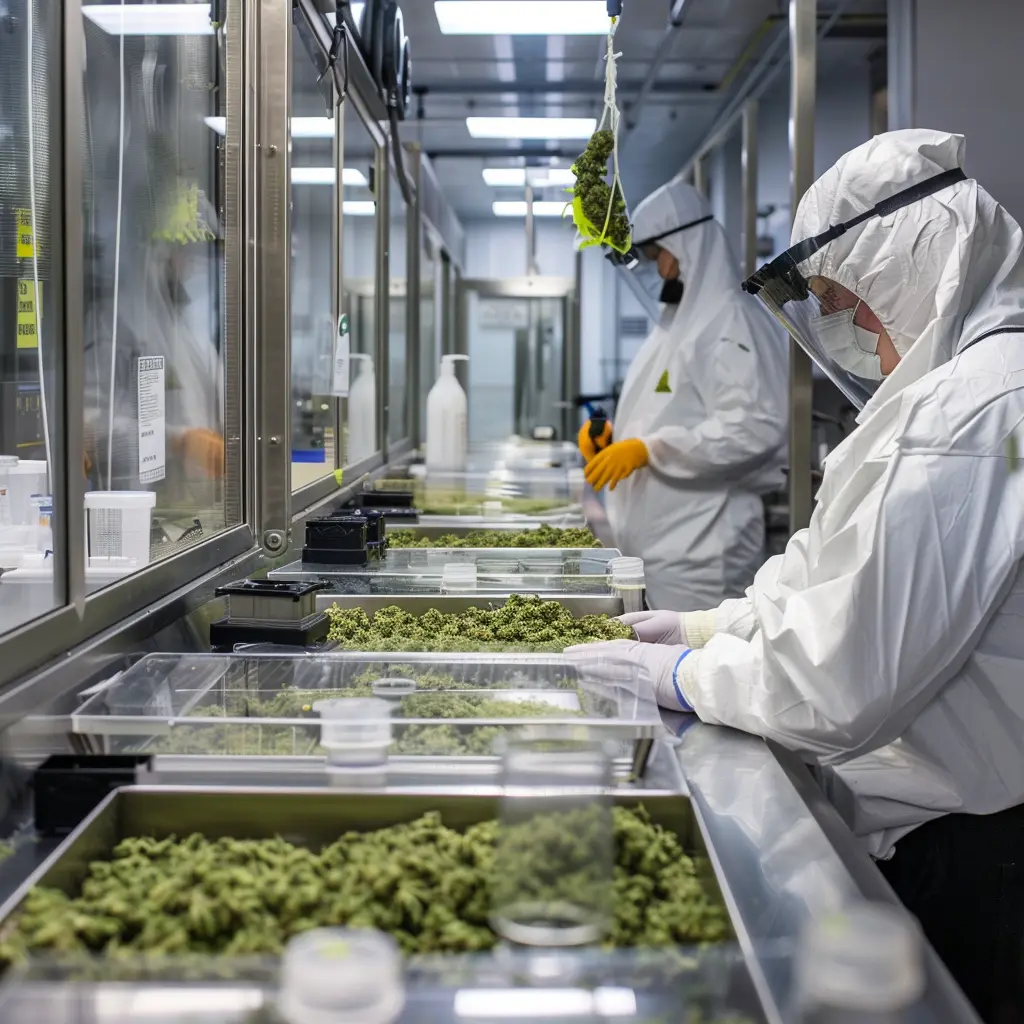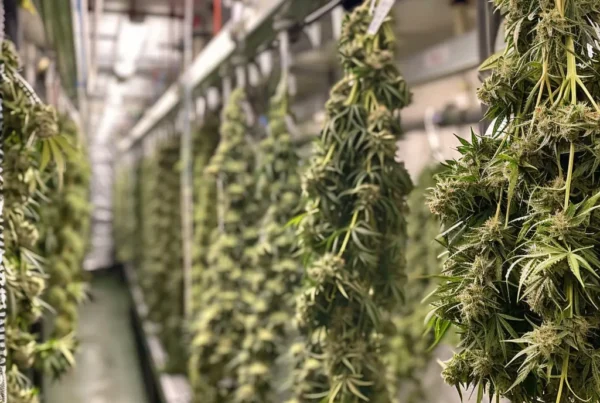Cannabis extraction is the process of separating valuable compounds from the cannabis plant. These compounds can be used for various products like oils, edibles, and topicals. There are many methods to extract these compounds, each with its own pros and cons. This article will explore different extraction methods, including solvent-based, solventless, and other emerging technologies.
Key Takeaways
- Cannabis extraction separates valuable compounds from the plant for use in products like oils and edibles.
- There are two main types of extraction methods: solvent-based and solventless.
- Solvent-based methods use chemicals to dissolve and separate compounds, while solventless methods use physical processes.
- Safety is crucial in cannabis extraction, especially when handling solvents and equipment.
- New technologies like ultrasonic and microwave-assisted extraction are emerging in the industry.
Solvent-Based Extraction Methods
Solvent-based extraction methods have become very popular in the cannabis industry because they are efficient and can extract many different compounds. Let’s look at some common solvent-based extraction methods.
Solventless Extraction Methods
Solventless extraction methods are gaining popularity in the cannabis industry. These methods do not use chemical solvents like butane or ethanol. Instead, they rely on mechanical processes to separate the desired compounds from the plant material. Let’s explore the three primary solventless techniques.
Rosin Press
Rosin press extraction uses heat and pressure to squeeze resin from cannabis flowers or hash. This method is simple and can be done at home with a hair straightener or a specialized rosin press machine. The result is a pure and potent concentrate that retains the plant’s natural flavors and aromas.
Ice Water Extraction
Ice water extraction, also known as bubble hash, involves mixing cannabis with ice and water. The cold temperature causes the trichomes to become brittle and break off. The mixture is then filtered through a series of screens to separate the trichomes from the plant material. This method is popular for producing high-quality hash without using any solvents.
Dry Sifting
Dry sifting is a traditional method that uses a series of screens to separate trichomes from the cannabis plant. The plant material is gently rubbed over the screens, allowing the trichomes to fall through and collect below. This method is simple and effective, producing a fine powder known as kief.
Solventless extraction methods offer a clean and natural way to produce cannabis concentrates, preserving the plant’s original characteristics.
Steam Distillation
Process Overview
Steam distillation is a gentle extraction method that uses steam to separate the volatile compounds from the plant material. The steam carries these compounds through a condenser, where they are cooled and collected. This method is often used for extracting essential oils and can also be applied to cannabis extraction. It is known for preserving delicate compounds like terpenes while removing unwanted components.
Applications in Cannabis
In cannabis extraction, steam distillation is used to obtain essential oils that contain valuable compounds such as terpenes and cannabinoids. This method is particularly useful for producing high-quality extracts that maintain the plant’s natural aroma and flavor. However, it is a slower and less efficient method compared to solvent-based techniques.
Advantages and Disadvantages
Advantages:
- Preserves delicate compounds
- Removes unwanted components
- Produces high-quality extracts
Disadvantages:
- Slower process
- Less efficient than solvent-based methods
Steam distillation is a great choice for those looking to produce high-quality cannabis extracts, despite its slower pace and lower efficiency.
Factors Affecting Extraction Efficiency
Particle Size
The size of the particles used in the extraction process can greatly impact the efficiency. Smaller particles have a larger surface area, which allows for better interaction with the solvent. This can lead to a higher yield of the desired compounds. However, if the particles are too small, they can create a clogging issue in the extraction equipment.
Temperature
Temperature plays a crucial role in the extraction process. Higher temperatures can increase the solubility of compounds, making the extraction more efficient. But, it’s important to find a balance because too high a temperature can degrade sensitive compounds. The right temperature can help in achieving optimal extraction efficiency.
Extraction Time
The duration of the extraction process is another key factor. Longer extraction times can lead to higher yields, but they can also result in the extraction of unwanted compounds. It’s essential to find the right balance to maximize the yield of desired compounds while minimizing the extraction of undesired ones.
Several factors contribute to the extraction efficiency of plant and herbal samples, such as raw materials, extraction methods, pressure, type of solvents, and more.
Safety Considerations in Cannabis Extraction
Handling Solvents
When working with solvents, safety should be a top priority. Solvents like butane and ethanol are highly flammable, posing significant explosion risks. Always work in well-ventilated areas and use proper storage containers to minimize hazards.
Equipment Maintenance
Regular maintenance of extraction equipment is crucial for safe operations. Inspect machines frequently for wear and tear, and replace any faulty parts immediately. Proper maintenance not only ensures safety but also improves extraction efficiency.
Personal Protective Equipment
Wearing the right personal protective equipment (PPE) is essential. This includes gloves, goggles, and lab coats. PPE helps protect against chemical spills and other potential dangers during the extraction process.
Even though some methods like CO2 extraction are generally safer, following safety protocols is still necessary to avoid accidents.
Emerging Extraction Technologies
Ultrasonic Extraction
Ultrasonic extraction uses sound waves to break down plant material and release compounds. This method is quick and efficient, making it a popular choice for extracting cannabis. It requires less solvent and time compared to traditional methods.
Microwave-Assisted Extraction
Microwave-assisted extraction uses microwave energy to heat the plant material and solvents. This method speeds up the extraction process and can improve the yield and quality of the extract. It’s a greener option as it often requires less solvent.
Enzyme-Assisted Extraction
Enzyme-assisted extraction uses enzymes to break down the plant cell walls, releasing the desired compounds. This method is gentle and can preserve the quality of the extract. It’s especially useful for extracting delicate compounds that might be damaged by heat or harsh chemicals.
These emerging technologies offer new ways to extract cannabis compounds efficiently and sustainably. They are becoming more popular as the industry looks for greener and more effective methods.
Conclusion
In summary, cannabis extraction methods are diverse and cater to different needs and preferences. Whether using solvents or going solventless, each technique has its own set of benefits and challenges. Solvent-based methods are known for their efficiency and ability to extract a wide range of compounds, while solventless methods are appreciated for their simplicity and purity. Understanding these methods helps in choosing the right one for specific applications, ensuring the best possible outcome for cannabis products. As the industry continues to grow, new and improved extraction techniques will likely emerge, offering even more options for producing high-quality cannabis extracts.
Frequently Asked Questions
What is cannabis extraction?
Cannabis extraction is the process of pulling out valuable compounds like cannabinoids and terpenes from the cannabis plant. This can be done using different methods, either with or without solvents.
What are solvent-based extraction methods?
Solvent-based extraction methods use substances like hydrocarbons, ethanol, or CO2 to dissolve and separate the desired compounds from the plant material.
What are solventless extraction methods?
Solventless extraction methods use physical processes, such as pressing or sifting, to separate the valuable compounds without using additional chemicals.
What is steam distillation?
Steam distillation is a method where steam is used to extract essential oils from plant materials, including cannabis. The steam helps to release the oils, which are then collected and separated.
Why is safety important in cannabis extraction?
Safety is crucial because many extraction methods involve using flammable solvents or high-pressure equipment. Proper handling, maintenance, and protective gear are essential to prevent accidents.
What are some new technologies in cannabis extraction?
New technologies like ultrasonic extraction, microwave-assisted extraction, and enzyme-assisted extraction are emerging. These methods aim to make the extraction process faster, safer, and more efficient.






